Thomastown, Co. Kilkenny
Thomastown was one of the 32 new Poor Law Unions created in Ireland between 1848 and 1850. Thomastown Union formally came into existence on 7th June 1850. It was created from the southern part of the Kilkenny, Callan, and New Ross Unions and occupied an area of 183 square miles. The population falling within the Thomastown Union at the 1901 census had been 13,228. In 1905, it comprised the following electoral divisions:
Aghaviller, Ballyhale, Ballyvool, Bennetsbridge, Bramblestown, Castlebanny, Castlegannon, Coolhill, Danesfort, Ennisnag, Famma, Freaghana, Goresbridge, Graiguenamanagh, Inistioge, Jerpointchurch, Kilfane, Kilkeasy, Kiltorean, Knocktopher, Pleberstown, Powerstown, Stonyford, Thomastown, Tullaherin, Ullard, Woolengrange.
The Guardians met on alternate Thursdays.
Prior to the construction of a workhouse at Thomastown, the union set up a temporary establishment in premises at Thomastown and also housed paupers at the Kilkenny, Callan and New Ross workhouses. The union's own workhouse was opened in March 1853 and its paupers were then transferred there from the other workhouses. The new building occupied an eight-acre site to the north-east of Thomastown. Designed by the Poor Law Commissioners' architect George Wilkinson, it was based on one of his standard plans to accommodate 600 inmates. Its construction cost £6,250 plus £1,215 for fittings etc. The workhouse location and layout in about 1910 are shown on the map below.
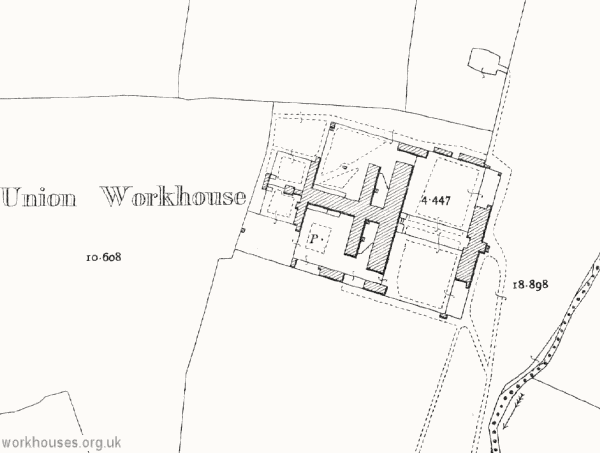
Thomastown workhouse site, c.1910.
The main buildings broadly followed Wilkinson's typical layout. However, the entrance block at the east was a long single-storey building with a central arched entrance, rather than the more usual compact two-storey structure.
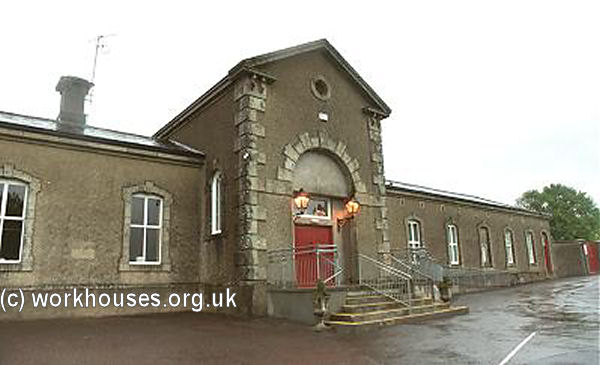
Thomastown entrance block from the south-east, 2002
© Peter Higginbotham.
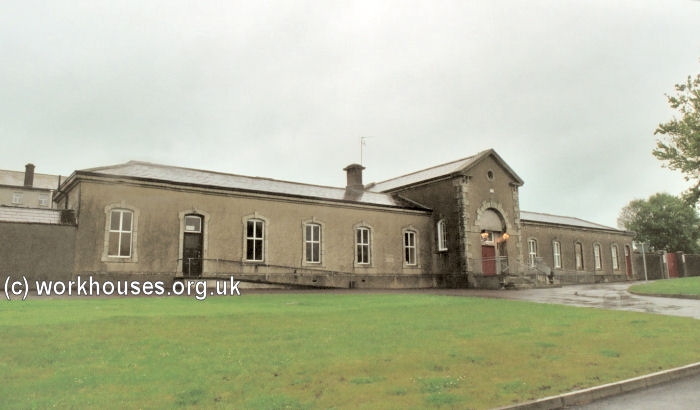
Thomastown entrance block from the south-east, 2002
© Peter Higginbotham.
To the rear, a central walkway was flanked by walled walkways at each side.
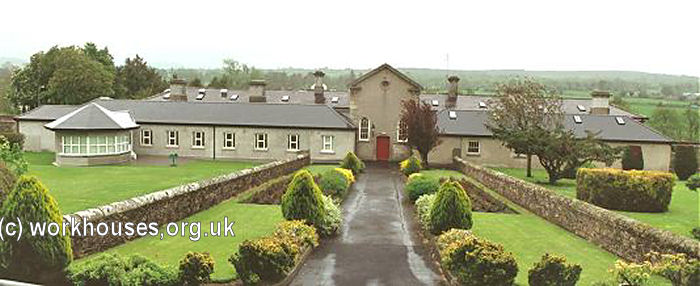
Thomastown entrance block from the west, 2002
© Peter Higginbotham.
Privies were located at the corner of each yard.
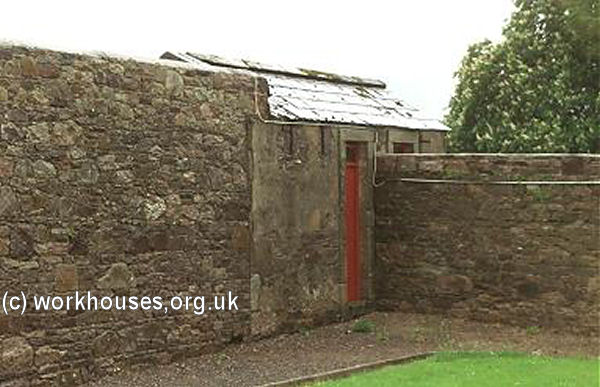
Thomastown privies, 2002
© Peter Higginbotham.
The main accommodation block had the Master's quarters at the centre, with male and female wings to each side.
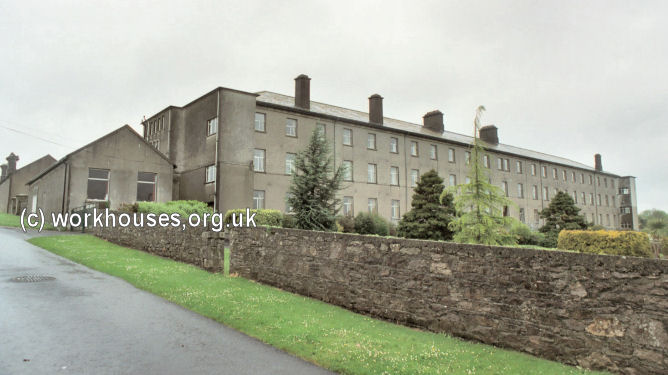
Thomastown accommodation block from the south-east, 2002
© Peter Higginbotham.
A utility block containing bakehouse, washhouse etc. was immediately to the rear.
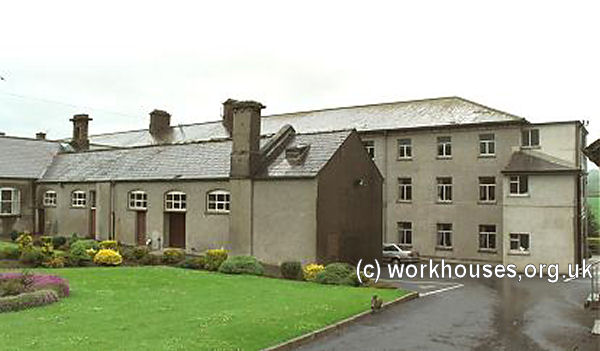
Thomastown rear of utility and accommodation block from the south-east, 2002
© Peter Higginbotham.
A central spine containing the chapel and dining-hall linked to the infirmary at the west of the site.
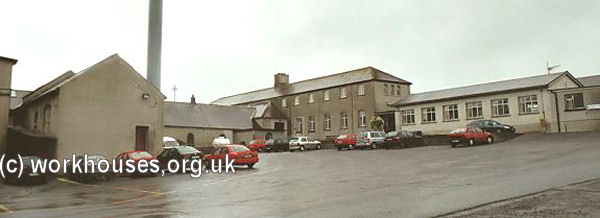
Thomastown chapel/dining-hall and infirmary block from the north-east, 2002
© Peter Higginbotham.
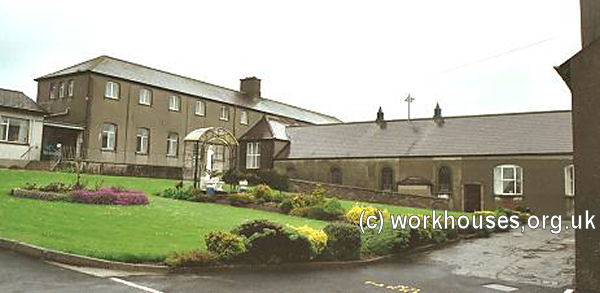
Thomastown chapel/dining-hall and infirmary block from the south-east, 2002
© Peter Higginbotham.
In 1888, despite initial opposition from some of the Board of Guardians, nursing care at the workhouse was taken over by the Sisters of the St John of God order. The first to be appointed was Sister Augustine Doyle on 18th December 1888, later followed by Sister Agnes who had responsibility for care of the children. At the end of the century, the nursing staff comprised three trained nurses, one night nurse, a nurse in the fever hospital, a midwife, and a superintendent of children. By this time, the workhouse was catering for up to 1,090 inmates, with 237 more on out-relief.
Unmarried mothers often had their children in the workhouse. Some were adopted but the rest were kept by their mothers and educated in the workhouse and later at the Convent School. At school they were picked out by their distinctive uniform of check pinafores for the girls, and tweed trousers and jackets for the boys.
At the 1901 census, the population of the Union was 13,228 including 14 officials and 146 inmates in the workhouse.
In 1921, following the formation of the Irish Free State, the workhouse was redesignated as the Thomastown County Home under the control of the county's Boards of Health and Public Assistance.
In 1957, the institution was renamed St Columba's Hospital and has since provided care exclusively for the elderly.
Records
Note: many repositories impose a closure period of up to 100 years for records identifying individuals. Before travelling a long distance, always check that the records you want to consult will be available.
- Kilkenny County Library, 6 John's Quay, Kilkenny, Co. Kilkenny. Holdings include: Guardians' minutes (1857-1926, with gaps).
Bibliography
- A Short History of St Columba's Hospital by staff of St Columba's Hospital.
- The Workhouses of Ireland by John O'Connor (Anvil Books, 1995)
Links
- None.
Unless otherwise indicated, this page () is copyright Peter Higginbotham. Contents may not be reproduced without permission.


